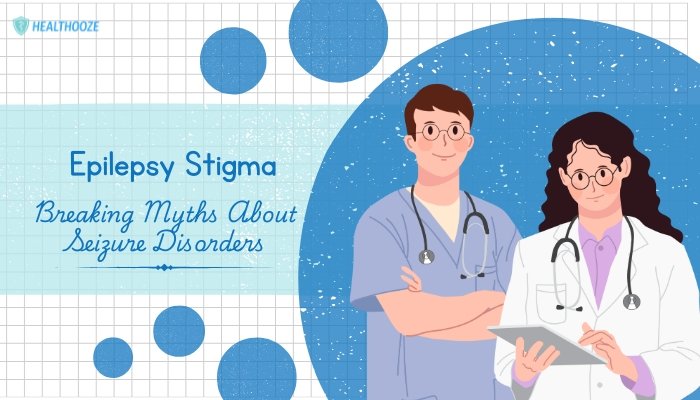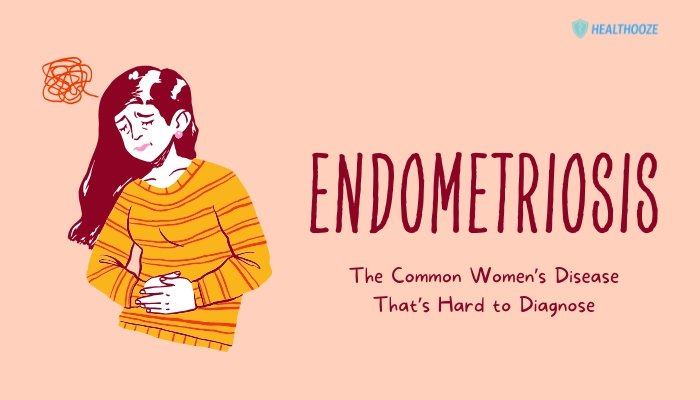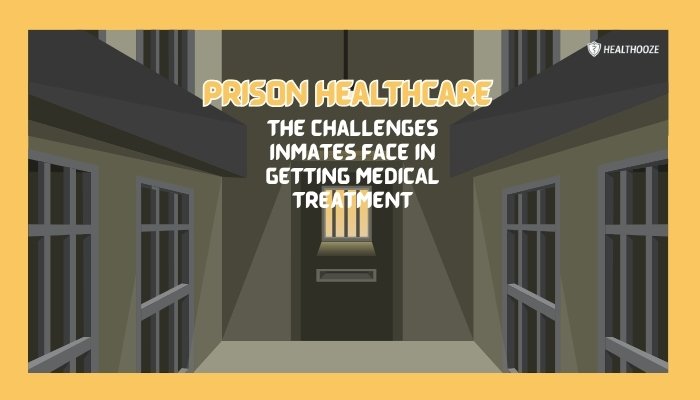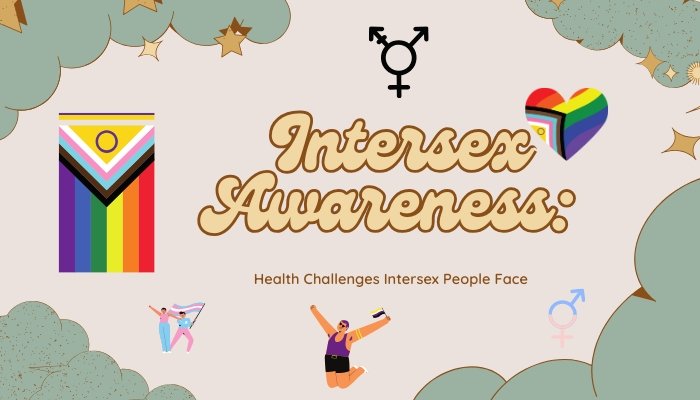Introduction
Epilepsy is one of the most common neurological disorders worldwide, affecting millions of individuals from all walks of life. It is defined by recurrent, unprovoked seizures resulting from abnormal brain activity. Although research has advanced tremendously in diagnosing and managing epilepsy, stigma remains a substantial barrier to well-being and social integration for many.
Misunderstandings about epilepsy can foster discrimination and isolation, interfering not only with personal confidence but also with access to employment, education, and healthcare opportunities.
This article aims to dissect the stigma around epilepsy, explain its origins and impact, and provide evidence-based clarifications that challenge widespread myths.
By championing accurate knowledge, empathy, and inclusive practices, we can reduce the weight of stigma and ensure that individuals with epilepsy lead fulfilling, respected lives in their communities.
Understanding Epilepsy
What Is Epilepsy?
Epilepsy is a chronic neurological condition marked by a tendency for recurrent seizures, which manifest when neurons in the brain send out abnormal signals. A single seizure may or may not indicate epilepsy; typically, a diagnosis requires at least two unprovoked seizures or a clear predisposition for repeated episodes. While seizures are the hallmark feature, epilepsy actually encapsulates a broad spectrum of seizure types and associated symptoms. Some seizures involve full-body convulsions (generalized tonic-clonic), while others may present as brief lapses in attention (absence seizures) or subtle muscle twitches (myoclonic seizures).
Prevalence and Impact
In many regions of the world, epilepsy is one of the most prevalent neurological disorders. Despite treatment advances, a considerable proportion of individuals do not achieve full seizure control, particularly in areas with limited healthcare resources. Even in well-resourced settings, medication side effects, risks of injury, and lifestyle restrictions contribute to ongoing challenges. Social factors—chief among them stigma—only magnify the burden.
Key Seizure Types
- Focal Seizures: Originate in one area of the brain. Symptoms can include altered sensations, movements, or confusion, depending on which brain region is involved.
- Generalized Seizures: Affect both hemispheres from the onset. Subtypes include tonic-clonic (formerly grand mal), absence (petit mal), myoclonic, atonic (drop attacks), and more.
- Focal to Bilateral Tonic-Clonic: Seizures that begin in one part of the brain but spread to involve the entire cortex.
The variety of seizure types can add to public confusion, with some forms (like tonic-clonic seizures) capturing public attention and overshadowing milder or more subtle manifestations. This can feed into stereotypical images of epilepsy and leave individuals with other seizure types feeling misunderstood.
The Roots of Epilepsy Stigma
Stigma is a social process in which certain traits or diagnoses are deemed deviant, unwanted, or threatening. For people with epilepsy, stigma can be traced to long-standing myths, cultural beliefs, and the unpredictable nature of seizures.
Historical Perspectives
- Supernatural Explanations: In ancient cultures, seizures were sometimes attributed to possession by spirits or punishment for moral failings. These ideas produced fear, leading to ostracization of those who had them.
- Moral Judgments: In certain eras, epilepsy was incorrectly linked to demonic influence, mental instability, or hereditary curses. Communities might isolate affected individuals or subject them to harsh treatments.
Modern Misconceptions
- Contagion Fears: Some people erroneously believe seizures are contagious, which can prompt avoidance of physical contact or personal interaction.
- Intellectual Inferiority: Epilepsy may be assumed to reflect lower intelligence or an inability to function productively. However, most people with epilepsy have normal cognitive abilities.
- Violence or Unpredictability: TV portrayals or sensational media coverage may frame individuals with seizures as unpredictable or prone to violent outbursts, fueling undue suspicion.
- Single “Grand Mal” Stereotype: Outsiders might assume all seizures entail dramatic convulsions, ignoring that many people have partial or subtle seizures rarely noticed by onlookers.
Social Media and Misinformation
While modern media can raise awareness, it also spreads inaccurate claims about epilepsy, for instance, that it arises purely from psychological weakness or can be instantly cured by unproven remedies. Anxiety about potential seizures in public settings can be amplified by these narratives, deepening isolation.
Consequences of Stigma
Stigma can infiltrate nearly every aspect of life for someone with epilepsy, leading to emotional distress, discrimination, and restricted social or economic engagement.
Emotional and Psychological Impact
- Reduced Self-Esteem: Internalizing negative perceptions and feeling shame about one’s seizures.
- Anxiety and Depression: Fear of public seizures or being mistreated can feed chronic worry. Comorbid mood disorders are more common in individuals with epilepsy than in the general population.
- Social Withdrawal: To avoid awkward questions or potential confrontation, people may isolate themselves, refusing invitations or avoiding group activities that might trigger or reveal a seizure.
Barriers to Education and Employment
- Academic Challenges: Children with epilepsy may encounter teasing, exclusion from sports, or inadequate academic support if teachers hold biases about cognitive or behavioral issues.
- Workplace Discrimination: Potential employers might refuse to hire or promote someone with epilepsy, believing they pose safety risks or cannot handle job demands.
- Limited Opportunities: Negative stereotypes lead many with epilepsy to aim lower in career goals, anticipating rejections or feeling undeserving of high-responsibility roles.
Healthcare Avoidance
- Delayed Treatment: Fearing judgment or labeling, some individuals hide their seizures or hesitate to see specialists.
- Poor Adherence: Negative experiences with providers or stigma about medication side effects can cause suboptimal adherence to treatment, increasing the risk of uncontrolled seizures.
Global Disparities
In lower-income regions, the interplay of limited medical resources and cultural misconceptions can be extreme. People with epilepsy may face forced social isolation, poverty, or even harmful traditional “remedies” that reflect deep-rooted cultural beliefs about seizures.
Breaking Myths About Epilepsy
Myth 1: Epilepsy Always Causes Dramatic Convulsions
Reality: Only some seizure types involve full-body convulsions. Others might present as brief muscle jerks, confusion, or a blank stare (absence seizures). Not all seizures are outwardly obvious; people with focal aware seizures can remain fully conscious, simply experiencing odd sensations or involuntary movements.
Myth 2: Seizures Are a Form of Mental Illness
Reality: Epilepsy is a neurological—not psychiatric—disorder. While depression and anxiety can co-occur, seizures themselves stem from abnormal electrical activity in the brain rather than psychological causes.
Myth 3: Epilepsy Is Uncontrollable
Reality: A significant portion of people with epilepsy achieve seizure control through medication and lifestyle management. Even those with drug-resistant epilepsy have multiple treatment avenues, including surgery, neurostimulation devices, or dietary therapies.
Myth 4: People with Epilepsy Cannot Lead Normal Lives
Reality: With proper treatment, many people with epilepsy live active, fulfilling lives, pursuing education, careers, relationships, and recreational activities. Seizures do not necessarily define one’s identity or abilities.
Myth 5: Epilepsy Is Always Inherited
Reality: Genetic predisposition plays a role in some epilepsy syndromes, but others arise from various factors—brain injury, infections, developmental issues—without direct inheritance patterns. Many individuals have no clear family history of seizures.
Myth 6: Nothing Can Be Done to Help Someone During a Seizure
Reality: Proper first aid—like placing the person on their side, cushioning their head, and timing the seizure—can ensure safety and mitigate complications. Bystanders can provide reassurance and dignity to someone recovering post-seizure.
Combating Stigma at Different Levels
Eradicating stigma necessitates a multi-layered approach, ensuring individuals and institutions alike collaborate to dispel myths and uphold dignity for those with epilepsy.
Individual and Family Steps
- Education: Seeking accurate, evidence-based information about seizure types, triggers, and management.
- Open Communication: Talking with friends, coworkers, or schools about epilepsy can preempt misunderstandings.
- Peer Support: Local or online networks allow sharing of personal experiences and coping strategies, reducing isolation.
- Advocacy for One’s Rights: Understanding legal protections in employment or education contexts fosters confidence and counters discrimination.
Community and School Initiatives
- Public Awareness Campaigns: Local awareness days, seizure first-aid workshops, or epilepsy awareness events challenge stereotypes.
- Inclusive Education: Schools adopting inclusive policies for children with epilepsy—like ensuring staff training on emergency protocols—normalize difference and reduce fear among classmates.
- Public Spaces: Arranging accessible recreation facilities or events where people with epilepsy feel safe to participate builds social integration.
Healthcare Provider Roles
- Compassionate Care: Doctors, nurses, and allied health professionals who demonstrate empathy reduce feelings of shame.
- Patient Education: Thoroughly explaining diagnosis, management options, and seizure first-aid fosters patient self-efficacy and reduces confusion among families.
- Coordinated Care: Collaboration with mental health specialists to screen for depression, anxiety, or suicidal ideation, which can intensify with stigma or uncontrolled seizures.
Government and Policy
- Anti-Discrimination Laws: Strong legislative frameworks ensure equal job opportunities, fair insurance policies, and legal recourse for discrimination victims.
- Healthcare Access: Funding epilepsy clinics, subsidizing medications, and training more specialists can lessen the burden of untreated or poorly controlled epilepsy.
- Data Collection: National registries tracking epilepsy prevalence and care outcomes help direct resources and measure program impact.
Strategies for Personal Empowerment
People living with epilepsy can bolster self-esteem and resilience through self-advocacy, practical coping mechanisms, and forging supportive relationships.
Emphasizing Self-Management
- Medication Adherence: Consistent use of prescribed drugs and discussion with specialists if side effects hinder compliance.
- Lifestyle Adjustments: Incorporating balanced sleep, stress reduction techniques, and moderate exercise to minimize triggers.
- Medical Follow-Up: Regular check-ins with a neurologist to adjust therapy, track seizure frequency, and explore new treatments if needed.
Support Networks
- Local Support Groups: Sharing experiences with others who understand seizure challenges can validate emotions, reduce isolation, and exchange practical tips.
- Online Forums: Virtual communities unite individuals from different regions, giving advice on traveling, career decisions, or handling negative public reactions.
- Family and Friends: Encouraging loved ones to learn first aid and maintain open lines of communication about any emotional or social difficulties.
Self-Advocacy Skills
- Educating Others: Explaining to classmates, coworkers, or neighbors what to do if a seizure occurs, dispelling fears and encouraging acceptance.
- Celebrating Milestones: Recognizing personal achievements—a stretch of seizure-free days, completing a project—helps counter negative stereotypes.
- Public Engagement: Some choose to speak at awareness events or volunteer with epilepsy organizations, shifting the narrative from shame to empowerment.
Emerging Research and Medical Advances
Ongoing scientific progress aims to further elucidate epilepsy’s biological underpinnings and improve treatments, offering hope to patients. Novel therapies and refined diagnostic methods challenge the notion that epilepsy is inevitably disabling or confining.
Precision Medicine Approaches
- Genetic Testing: Identifying gene variants can clarify epilepsy syndromes, guiding medication choices or targeted interventions.
- Biomarkers for Seizure Prediction: Research on brain-wave analysis, wearable sensors, or machine-learning algorithms seeks to predict seizure onset, boosting safety and confidence.
Pharmacological Developments
- New Antiepileptic Drugs: Formulations with fewer side effects, longer half-lives, and better seizure control are regularly introduced.
- Adjunct Therapies: Cannabidiol-based medicines have shown promise for certain severe epilepsies. More robust data can broaden these uses.
Surgical and Technological Interventions
- Resective Surgery: For focal epilepsy unresponsive to medication, removing or isolating the epileptogenic zone can be curative.
- Neuromodulation: Vagus nerve stimulation (VNS) or responsive neurostimulation (RNS) devices deliver targeted impulses to reduce seizure frequency.
- Laser Ablation: Minimally invasive laser therapy can destroy seizure foci with less disruption than traditional surgery.
Psychosocial Research
Increasingly, research extends beyond seizure control to examine quality of life, mental health, and the psychosocial ramifications of epilepsy. This focus acknowledges the importance of addressing stigma, psychological well-being, and community integration—elements as crucial as seizure reduction itself.
Seizure First Aid: Knowledge to Combat Fear
One of the simplest yet most powerful ways to reduce epilepsy stigma is by teaching the general public how to handle a seizure safely. Dispelling the fear that nothing can be done during a seizure fosters a sense of control and compassion.
Basic Guidelines
- Stay Calm and Remain Nearby: Do not panic or run away. If you keep your composure, it reassures the person experiencing the seizure.
- Time the Seizure: A watch or phone timer helps track duration. Seizures under 2 minutes often end without complications, but if they persist beyond 5 minutes, or if multiple seizures occur back to back, emergency help is needed.
- Clear Surroundings: Gently move sharp or hard objects away from the individual to prevent injury.
- Protect the Head: Use a soft object like a jacket or pillow under the head.
- Don’t Restrain: Allow convulsions to proceed; forcing limbs still can cause harm.
- No Objects in Mouth: The notion of “swallowing the tongue” is a myth. Trying to force mouth insertion can cause choking or tooth damage.
- Recovery Position: Once jerking stops, roll the person onto one side to keep the airway clear.
- Stay Until Awareness Returns: Provide gentle reassurance, as postictal confusion or drowsiness is common.
When to Call for Emergency Help
- Seizure Lasts Over 5 Minutes: Risk escalates for status epilepticus, demanding urgent medical care.
- Consecutive Seizures: Repeated seizures without regaining consciousness in between is critical.
- First-Ever Seizure: Medical evaluation is essential to rule out underlying causes.
- Injury or Breathing Difficulty: If significant harm or breathing trouble arises, prompt ambulance intervention is necessary.
Knowing these steps promotes a supportive response rather than panic or stigma-fueled avoidance. The person with epilepsy appreciates a calm environment, free from fear or sensationalism.
Success Stories: Overcoming Epilepsy-Related Challenges
Amid the hardships, countless individuals with epilepsy thrive. Profiles of success—ranging from professional athletes to influential innovators—prove that while epilepsy can complicate life, it need not define it.
Examples of Empowerment
- Entertainment and Sports: Actors, musicians, or athletes with epilepsy who publicly discuss their condition challenge stereotypes, showing that peak performance is achievable.
- Advocacy Leaders: Individuals who create nonprofits, author books, or shape legislation become catalysts for social acceptance.
- Educational Achievements: Students who navigate academic accommodations, eventually entering top-tier universities and careers, highlight the power of supportive teachers and strong self-advocacy.
Seeing role models with epilepsy help dismantle archaic beliefs and instill hope in families newly navigating a diagnosis.
Conclusion
Epilepsy stigma stands as a significant obstacle to full social participation and emotional well-being for those with seizure disorders. Myths about contagion, intellectual deficits, or unpredictability distort public perceptions and spur discrimination in workplaces, schools, and communities. Yet, current knowledge underscores that epilepsy, while often chronic, is also highly manageable, with many living full, active lives free from daily disruptions.
Rectifying this misalignment between reality and perception demands collective effort. Individuals can self-advocate and seek supportive networks; families can champion acceptance; healthcare professionals can provide clear education; and entire communities can adopt more inclusive attitudes. Broader social policies—enforced anti-discrimination laws and accessible healthcare—are also vital. By prioritizing accurate, empathic conversations about epilepsy, society can dismantle stigma, ensuring that epilepsy becomes just one part of a diverse human experience rather than a defining limitation.
References
- Fisher RS, Acevedo C, Arzimanoglou A, et al. A practical clinical definition of epilepsy. 2014.
- Beghi E. The epidemiology of epilepsy. Neuroepidemiology. 2020.
- Leonardi M, Ustun TB. The global burden of epilepsy. Epilepsia. 2002.
- de Boer HM, Mula M, Sander JW. The global burden and stigma of epilepsy. Epilepsy Behav. 2008.
- Jacoby A, Baker GA. Quality-of-life trajectories in epilepsy: a review of measurement, predictors, and intervention. Curr Opin Neurol. 2013.
- Pal DK, Shinnar S, Outhred T, et al. Stigma of epilepsy: insights from qualitative studies. Epilepsy Behav. 2014.
- Meyer AC, Dua T, Ma J, et al. Global disparities in the epilepsy treatment gap. Acta Neurol Scand. 2010.
- Devinsky O, Spruill T, Thurman D, et al. Recognizing and preventing epilepsy stigma. Neurology. 2018.
- Eliott C, Brown V, Clarke T, et al. The psychosocial impact of epilepsy: A narrative literature review. Epilepsy Behav. 2018.
- Yardi N, Upton M, Westphal G. Public attitudes and beliefs about epilepsy and factors influencing stigma. Epilepsy Res. 2017.
- Guekht A, Fucic A, Ben-Menachem E, et al. Holistic management of epilepsy and comorbidities. Epilepsy Behav. 2021.
- Kwon C, Lindsey WT. Cultural considerations in the diagnosis and management of epilepsy. Epilepsy Behav. 2019.







